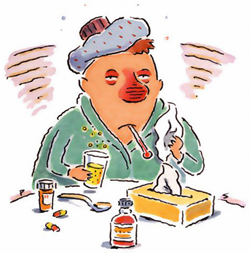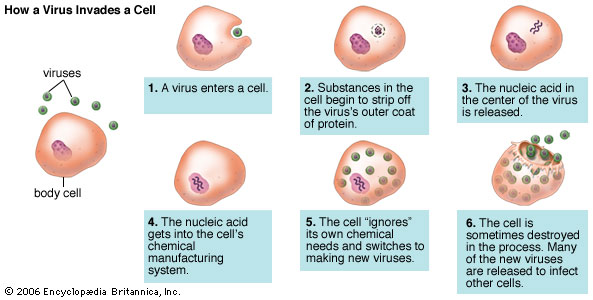 What's
going on?
What's
going on?A cold and influenza ("The Flu") are respiratory illnesses caused by different viruses. More than 300 different viruses can cause colds and influenza E.g.adenovirus, rhinovirus, parainfluenza virus, coronavirus. Much smaller than a bacterium, a virus is a tiny cluster of genetic material surrounded by a protein wrapper that uses host cells to create copies of itself -and in so doing, sometimes destroys the host's cells.

A cold will last, at most, a few weeks, but allergy symptoms can last all season.
Examples of bacterial infections. Include sinus, ear and lung infections (bronchitis and pneumonia), which may have the following symptoms:
If you have a bacterial infection, some of the natural antivirals used for cold/flu are also antibiotic E.g. Grapefruit seed extract (GSE), Wild Oregano Oil (WOO), Ionic Colloidal Silver (ICS)
The most common way to spread a cold/flu virus is by hand-to-hand contact. E.g. you shook the hand of someone with a cold/flu virus who just blew their nose, or you touched something they touched. Cold/flu viruses can live for hours on objects, such as pens, keyboards, coffee mugs, door knobs, telephones, shopping cart handles, etc.making cross-contamination pretty easy. The virus gains access to your body when your contaminated hand touches your nose, mouth or food, or you have an open wound on your hand.
A virus is not as likely to be contracted through coughing, sneezing or kissing, and definitely not from being out in the cold and rain.
A weakened immune system is virtually an open door to a virus, conversely - a strong immune system will protect you. The usual offenders that tear down your immune system include:
Vitamin D -The sunshine vitamin